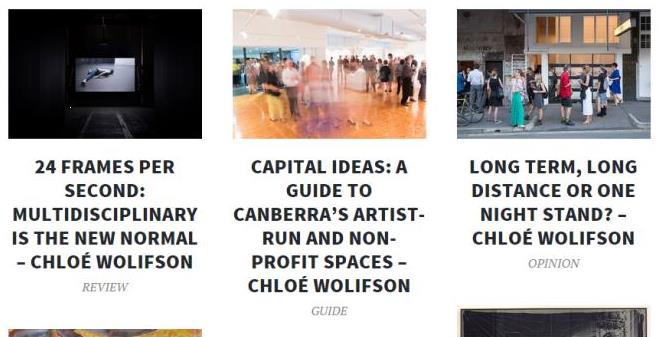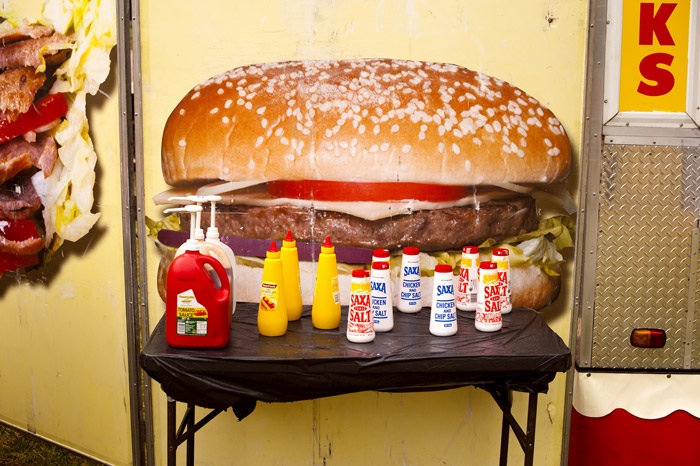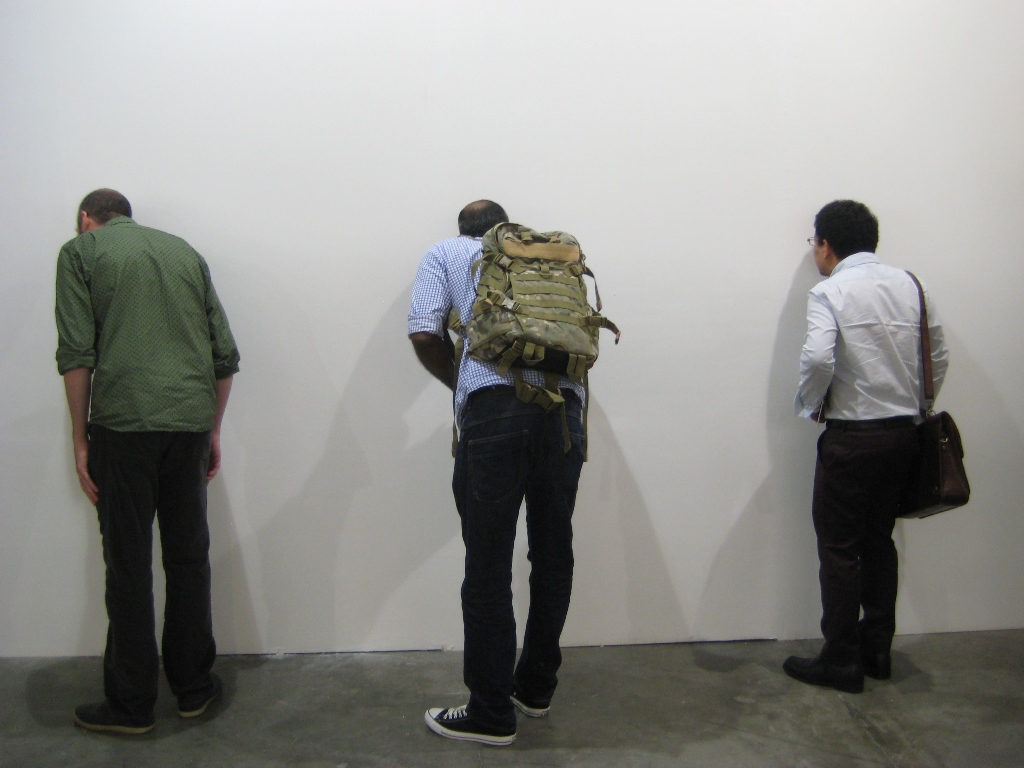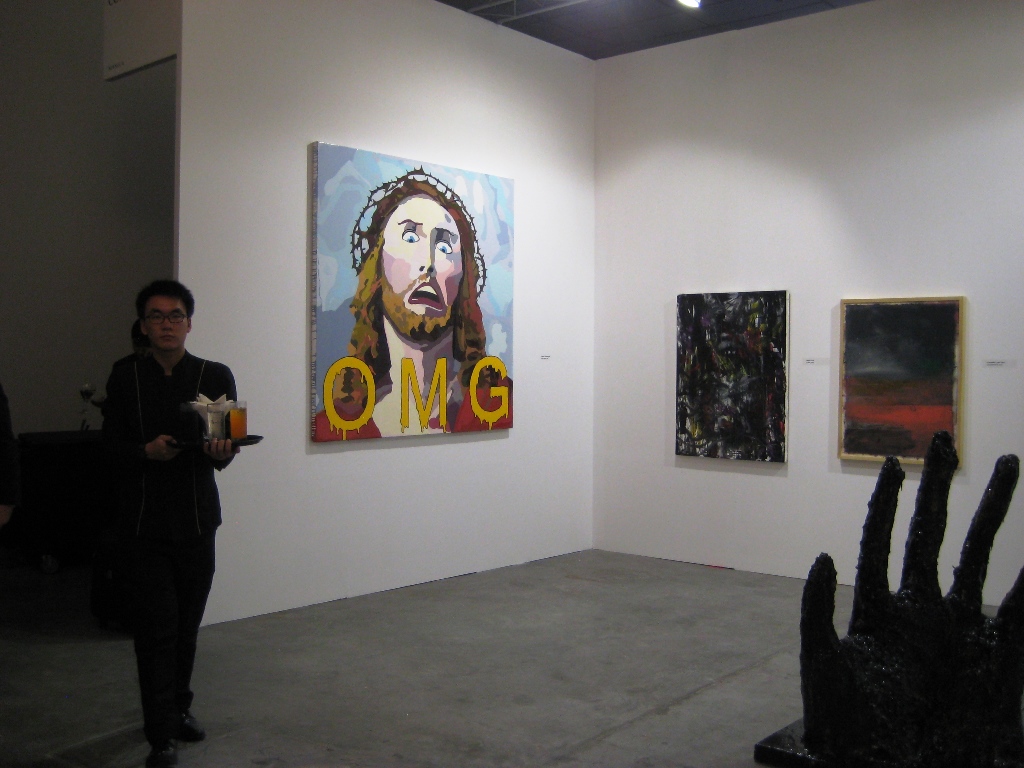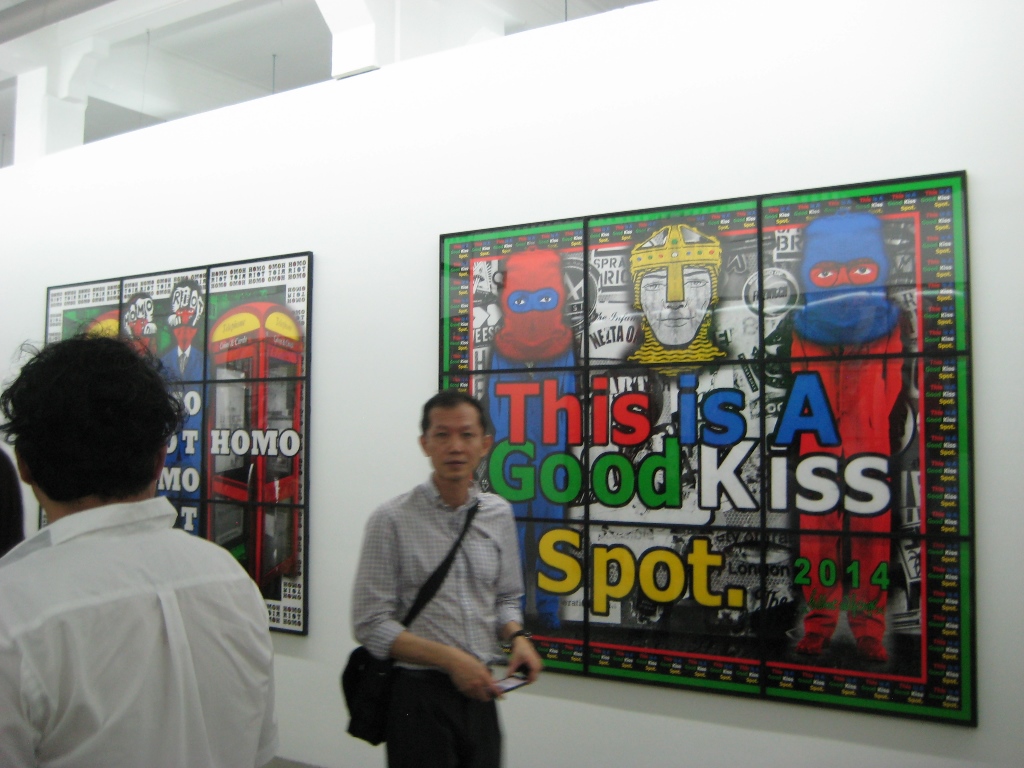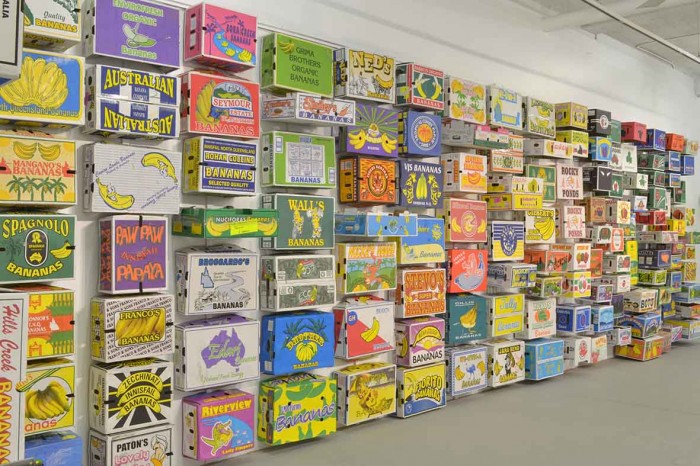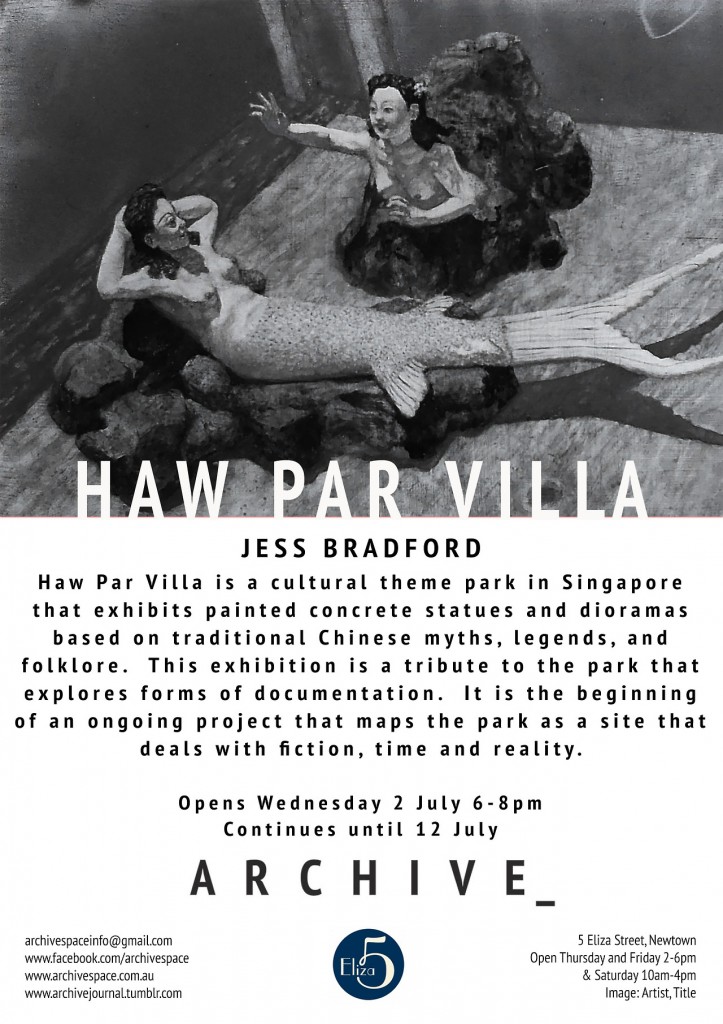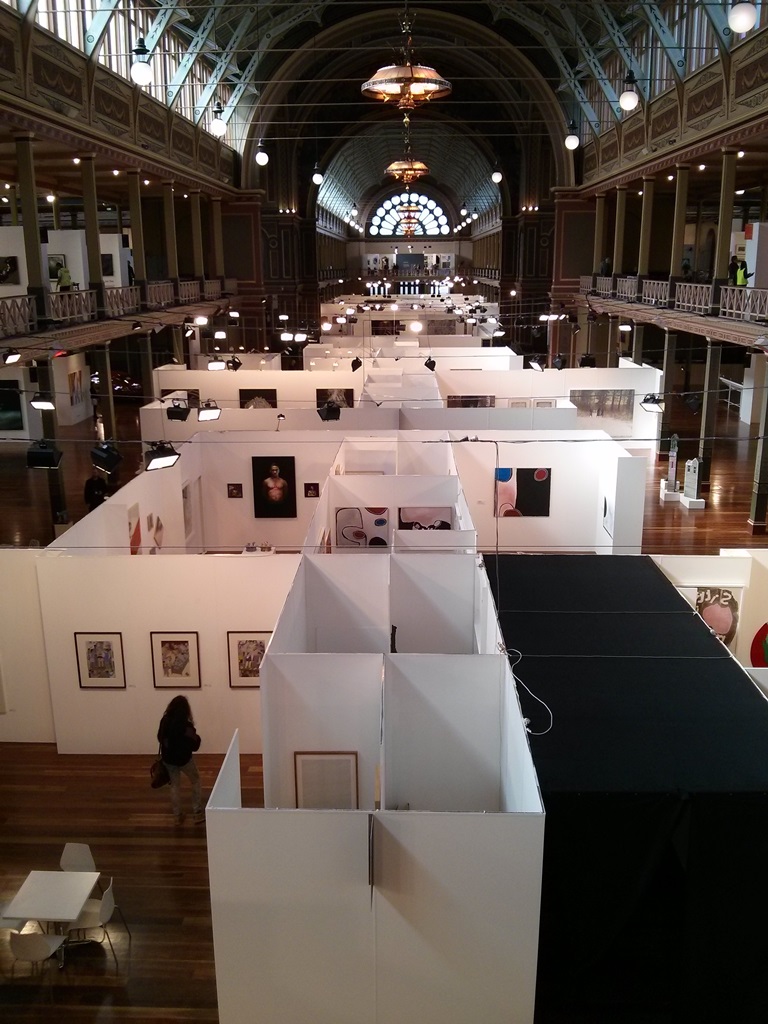Hey, you. You’ve been to a few art galleries over the years. Some exhibitions you enjoyed, and some you didn’t. But they stayed with you, and made you think. Maybe it’s been a while and you’ve forgotten that buzz. You put exhibitions on your to-do list, only to have them slip by like the ghost of good time management past. Endless Instagram scrolling has made you forget what it’s like to experience art in the flesh. Well, it’s time to get back in the game. Here’s 10 reasons to visit an art gallery.

George Shaw ‘Free Fern’ 2015, installation view, Redfern Biennale, Sydney. Photograph: Chloé Wolifson
10. The best things in life are free
When the crumbs on your keyboard have been there so long they have become sentient and begun to develop social structures, it’s time to close the laptop and get out of the house. ‘But going outside is expensive,’ I hear you cry. Fear not, frugal friend. Life is not all pricey popcorn deals and nightmare half-yearly clearances. With the exception of the odd major blockbuster show at the big museums, looking at art is gloriously gratis.

Pipilotti Rist ‘Mercy Garden Retour Skin’ 2014, installation view, Biennale of Sydney Museum of Contemporary Art Australia. Photograph: Chloé Wolifson
9. You had me at hello, let’s check out an art show
Take the pressure off a first date by heading to an exhibition opening. You’ll be surrounded by other people, there is complementary alcohol on hand, and chatting about the art (whether it’s awesome or terrible) is a great icebreaker. Whatever happens, it’s bound to be more stimulating than shuffling along in front of the Mad Mex counter, or happy hour at your local.

Ronnie van Hout, ‘Dave’ 2014, installation view, Darren Knight Gallery, Sydney. Photograph: Chloé Wolifson
8. Flying solo
No date? No plans? No worries. Get dressed up, get out of the house, and get thee to a gallery. If you’re feeling social, strike up a conversation with the person next to you about the art. It’s great networking practice for the introverted, and an ideal outlet for the chatty and opinionated.
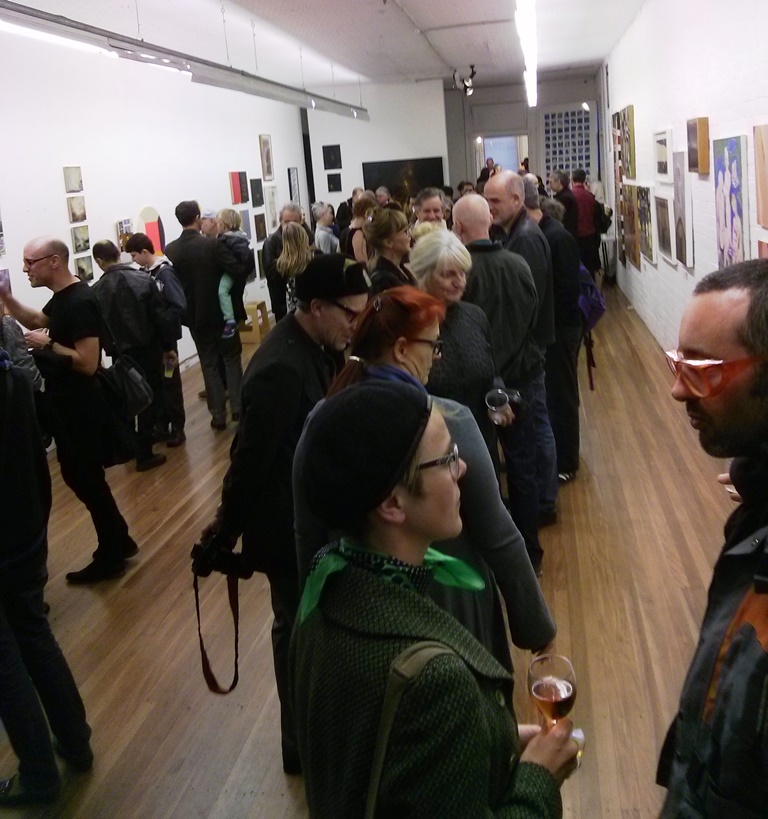
Exhibition opening at Damien Minton Gallery, Sydney, 2014. Photograph: Chloé Wolifson
7. Eight days of the week
At any given moment, somewhere in the world, someone is smashing a bag of ice on the floor, tipping it into a bucket of stubbies, and throwing open the doors to an exhibition opening. If you live within cooee of a metro area, this means unlimited mid-week evening entertainment options. Get on the mailing lists, get out there and leave the binge-watching behind.

Carla Cescon, ‘Policy for Inclusive Social Solutions’ 2014 (detail). Photograph: Chloé Wolifson
6. Cool and the gang
At some point, you will need to find something to talk to your friends about other than Game of Thrones. Before you ask, Better Call Saul doesn’t count. Broaden your horizons, baby! Impress your pals with tales of the weird and wonderful art you’ve seen – and ask them to join you next time.

Jodie Whalen, ‘Snails’ 2014, installation view, Artereal Gallery, Sydney. Photograph: Chloé Wolifson
5. The slow gift movement
Thanks to mass production and online shopping, there are no original ideas in the gift-giving game anymore – except art. Everybody wins when you give art – the artist can keep working, the gallery can keep their doors open, your friend gets a truly original present, and you get a promotion in the friend stakes. Don’t stop there, turn the tables! Start dropping hints now in advance of your next birthday.

Noel McKenna ‘Palm Springs Putting Green at Waterloo’ 2014 installation view, Darren Knight Gallery, Sydney. Photograph: Chloé Wolifson
4. Open your mind
Artists are influenced by everything under the sun, from science to philosophy to sport to the internet. They find interesting, exciting and strange new ways of looking at and thinking about the world, and their work can cause you to do the same. If you’re experiencing a mental block, there’s no better way to shake things up than to check out some art.

Archie Moore ‘Les Eaux d’Amoore’ 2014, installation view, The Commercial, Sydney. Photograph: Chloé Wolifson
3. In the flesh
Instagram is a great way to find out what’s going on, and gallery websites are fantastic resources to learn about artists, but it’s not how art is intended to be experienced. Scale, dimension, colour, light, sound, and movement can’t be replicated through a screen, or even a catalogue. Not to mention missing out on a discussion with your friend about the show, or that funny snippet of art-speak you overheard on the other side of the room.

Tully Arnot, ‘Meadow (IRL)’ 2015, installation view, Artereal Gallery, Sydney. Photograph: Chloé Wolifson
2. Act local
Do you like your neighbourhood vibrant, with friendly residents and businesses that support each other? If you answered no to the above, then I believe the internet may be able to provide you with all you need in life. Otherwise, find out where your local galleries are, get on their mailing lists, drop in regularly, and tell your friends and neighbours. Community is organic, like those overpriced vegies that go off quickly.

Hidemi Tokutake, installation view, 2015. Home at 735 Gallery, Sydney. Photograph: Chloé Wolifson
1. Heal your soul [insert foot pun here]
Like a lot of people, I spend a fair amount of time staring at a computer screen, out a bus window, or at the footpath. Thanks to art, in just the past few weeks I’ve also seen huge welded steel sculptures made by a 99-year-old; painstaking Indian miniatures in a re-purposed suburban building; a metal box turned into an interactive sound generator with the use of magnets; drawings made with wire mesh; video works featuring clones; and deliciously gestural abstract paintings. Art surprises, confuses, delights, makes you think, makes you squirm, and asks questions that can’t be answered by googling Wikipedia. It makes the brain better and the soul bigger. I don’t know what I’d do without it, and that’s why I keep going to galleries. What about you?

